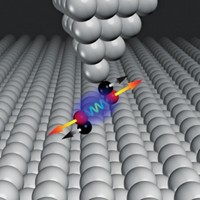Advertisement
Grab your lab coat. Let's get started
Welcome!
Welcome!
Create an account below to get 6 C&EN articles per month, receive newsletters and more - all free.
It seems this is your first time logging in online. Please enter the following information to continue.
As an ACS member you automatically get access to this site. All we need is few more details to create your reading experience.
Not you? Sign in with a different account.
Not you? Sign in with a different account.
ERROR 1
ERROR 1
ERROR 2
ERROR 2
ERROR 2
ERROR 2
ERROR 2
Password and Confirm password must match.
If you have an ACS member number, please enter it here so we can link this account to your membership. (optional)
ERROR 2
ACS values your privacy. By submitting your information, you are gaining access to C&EN and subscribing to our weekly newsletter. We use the information you provide to make your reading experience better, and we will never sell your data to third party members.
Analytical Chemistry
Nano Bowties Pump Up Fluorescence
Bowtie-shaped antennae boost the signal from individual dye molecules
by Celia Henry Arnaud
October 26, 2009
| A version of this story appeared in
Volume 87, Issue 43

Bow-tie-shaped nanoantennae can boost the signal from individual fluorescent dye molecules, according to a new report. W. E. Moerner of Stanford University and coworkers achieve large enhancements in fluorescence from individual dye molecules embedded in a thin polymer film coated on gold bow-tie nanoantennae (Nature Photon., DOI: 10.1038/nphoton.2009.187). The bow-tie structures consist of a pair of triangles with a small gap between them. The dye molecules with the highest enhancement are optimally coupled to the bow ties; they have their dipole moment oriented along the nanoantenna’s long axis and are located in the middle of the bow tie’s gap. The largest enhancements—as much as a factor of 1,340—came from the antennae with the smallest gaps. Calculations show that although both high- and low-quantum-efficiency molecules benefit from the enhanced fields of the nanoantennae through increases in their absorption of light, low-quantum-efficiency molecules also benefit from an increase in their emission. Such antennae will allow scientists to focus on individual dye molecules in a microscopy sample or might function as single photon sources in optical communication devices.




Join the conversation
Contact the reporter
Submit a Letter to the Editor for publication
Engage with us on Twitter